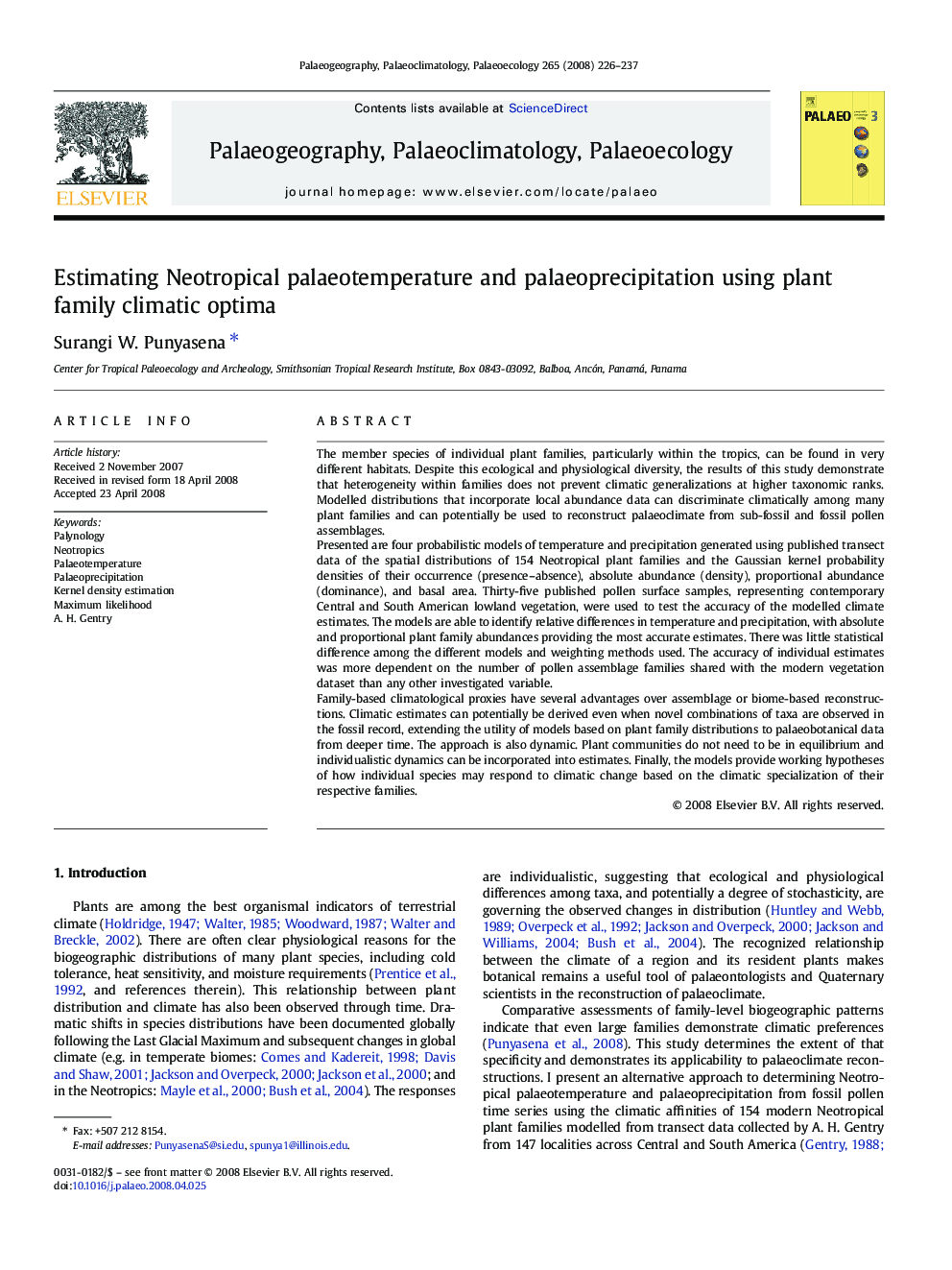| کد مقاله | کد نشریه | سال انتشار | مقاله انگلیسی | نسخه تمام متن |
|---|---|---|---|---|
| 4468482 | 1622323 | 2008 | 12 صفحه PDF | دانلود رایگان |

The member species of individual plant families, particularly within the tropics, can be found in very different habitats. Despite this ecological and physiological diversity, the results of this study demonstrate that heterogeneity within families does not prevent climatic generalizations at higher taxonomic ranks. Modelled distributions that incorporate local abundance data can discriminate climatically among many plant families and can potentially be used to reconstruct palaeoclimate from sub-fossil and fossil pollen assemblages.Presented are four probabilistic models of temperature and precipitation generated using published transect data of the spatial distributions of 154 Neotropical plant families and the Gaussian kernel probability densities of their occurrence (presence–absence), absolute abundance (density), proportional abundance (dominance), and basal area. Thirty-five published pollen surface samples, representing contemporary Central and South American lowland vegetation, were used to test the accuracy of the modelled climate estimates. The models are able to identify relative differences in temperature and precipitation, with absolute and proportional plant family abundances providing the most accurate estimates. There was little statistical difference among the different models and weighting methods used. The accuracy of individual estimates was more dependent on the number of pollen assemblage families shared with the modern vegetation dataset than any other investigated variable.Family-based climatological proxies have several advantages over assemblage or biome-based reconstructions. Climatic estimates can potentially be derived even when novel combinations of taxa are observed in the fossil record, extending the utility of models based on plant family distributions to palaeobotanical data from deeper time. The approach is also dynamic. Plant communities do not need to be in equilibrium and individualistic dynamics can be incorporated into estimates. Finally, the models provide working hypotheses of how individual species may respond to climatic change based on the climatic specialization of their respective families.
Journal: Palaeogeography, Palaeoclimatology, Palaeoecology - Volume 265, Issues 3–4, 11 August 2008, Pages 226–237